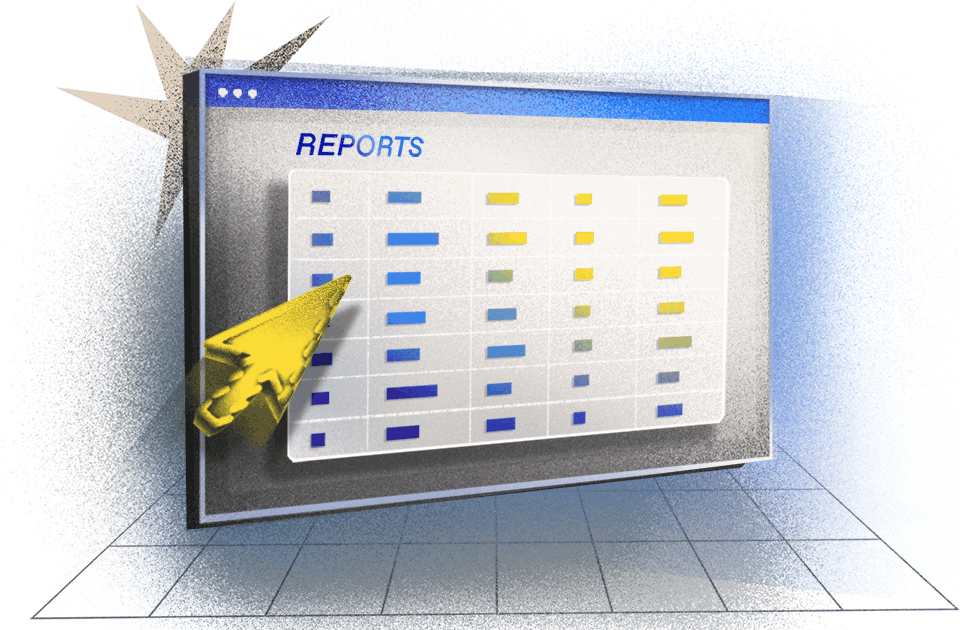Companies predominantly use revenue management in industries characterized by fixed capacity and costs and products or services that expire. These industries include travel, hospitality, and event-related retailing.
Revenue management has permeated other industries, including the SaaS sector, despite its origin in travel and hospitality. Its methodology has quickly proven itself in maximizing profits for the industry.
However, today most SaaS businesses are going a step further and considering a revenue operations (RevOps) system. The umbrella term RevOps combines product, finance, sales, and marketing to provide SaaS products and services the best chance at optimizing revenue and increasing profits.
What is revenue management?
Revenue management refers to applying disciplined data analytics to maximize profitability. It predicts customer behavior at micro-market levels, fine-tunes product pricing, and adjusts availability to maximize revenue. It helps SaaS businesses understand their customers better and align their products with the ideal customer profiles (ICPs) by tweaking product pricing, availability, and market placement.
Why is revenue management important?
Companies use revenue management to analyze associated data and techniques to determine areas and opportunities to create additional revenue and increase profits. It allows companies to strengthen their finances while distancing themselves from the competition.
Additionally, revenue management allows management to make informed, data-driven decisions rather than relying on guesswork or instincts.
The foundation of a good revenue management system (RMS)
Revenue managers use a revenue management system (RMS) to analyze a company's available supply, market demand, and consumers' price sensitivity and demographics—for example, business, leisure, loyalty, or transient. Today's revenue managers rely on the following four components to build a foundation for successful revenue management:
1. Input on competitors
Competitors' rates are critical for setting the best SaaS rates because their prices shape the overall consumers' perception of the "true price" for a given product or service. Therefore, input on competitors' rates provides a valuable baseline for companies to optimize their rates.
2. Product or service value analysis
A value analysis of a company's product or service offering puts it in context among competitors by comparing its features and reviews against those of the competition. Once a company can visualize its value and competitive advantage, it can better position its products or services to potential customers.
3. Automated alerts
Technology empowers companies and revenue managers with automation. Modern software allows users to set up automated alerts to support their strategy and keep it on track 24/7/365. They also enable real-time responsive revenue management.
4. Routine
Routine and habits can help unlock revenue management insight. Revenue managers who follow daily routines maintain visibility over their strategy and make tweaks when necessary to ensure the alignment between subscription strategy and how the software functions.

The revenue management process in 5 steps
SaaS companies should collect data and use it for forecasting to help predict the future performance of products and services and make adjustments to maximize revenue. Below is the revenue management process in detail:
1. Data collection and recording
Companies should base their revenue management systems on the collection and recording of data to enable decision making, translating into price and distribution strategies. Therefore, all the information the company obtains relating to its customers and purchasing habits is essential for revenue managers—for example, subscription dates, cancellations, plans, etc.
2. Historical data analysis
Interpreting and analyzing historical data is the basis for producing sales forecasts and pricing and distribution strategies. Revenue managers have the complicated task of focusing on market segmentation. The analysis allows SaaS companies to identify patterns and exploit them to increase their bottom line.
3. Evaluation of seasonal trends
When preparing the sales forecast, precision is critical in obtaining a demand measurement, including seasonal trends characterized by activity peaks and troughs. In turn, forecasting enables companies to react when faced with low demand periods. It also allows them to design different rate levels and select optimal distribution channels.
4. Market trends analysis
It's an analysis of past and prevailing market behavior plus dominant patterns of consumers and the market. To analyze market trends, keep track of industry publications and influencers, listen to your customers, absorb up-to-date industry trends and research, and utilize available digital tools and analytics.
5. Competitor research
Competitor research and analysis should include competitors' pricing, features, market share, differentiators, marketing, location, strengths, weaknesses, and customer reviews.
Revenue management KPIs: Top metrics to follow
After formulating your revenue management process and strategies, you need to track their performance and success. The following revenue management key performance indicators (KPIs) are available for SaaS companies:
1. Customer lifetime value (CLTV)
You can determine your customer lifetime value using the equation below:
- CLTV = average revenue per account/net monthly recurring revenue churn × 100
A steady or increasing CLTV indicates successful revenue management. A rising CLTV shows that you are retaining customers longer who are buying more.
2. Average cost per acquisition (ACPA)
Average cost per acquisition measures if a SaaS company is spending its money in the right places and keeping its acquisition strategy up-to-date. Aim for organic acquisition channels to lower your costs as your brand awareness grows.
3. Monthly & annual recurring revenue (MRR/ARR)
These two holistic KPIs indicate how your business is performing. They are excellent for showing business growth and progress, especially when aligned alongside other KPIs.
ARR gives an annual prediction even if a business has only collected data for a few months.
4. Customer & revenue churn rate (CRR/RCR)
Customer churn rate sets benchmarks that businesses should aim to beat.
- CCR = difference between the number of users at the start and end of a selected period divided by the number of users present at the start of the period
- RCR = The net revenue lost from customers within a period/ the total revenue at the start of the period
Revenue churn rate goes hand-in-hand with CCR unless you have flexible, monthly pricing plans. In this case, you may realize you are losing revenue but not clients because they are going for cheaper plans. Fortunately, you can try and upsell them or adjust your plans to generate more revenue.
Top revenue management strategies you can employ
Revenue managers use data from market and business intelligence tools to craft strategy. They then leverage the right software to implement proven tactics and adjust the pricing levers based on forecast and actual demand. Finally, companies blend these strategies depending on current market conditions and the best combination to facilitate growth. These strategies include:
1. Analyze the market
It is essential to understand your market before implementing a revenue management strategy. Know things like where demand comes from, what demographics to target, and the various local factors affecting demand. It's also prudent to know your target audience's needs, wants, and expectations. Finally, understand the competition within the market to make strategic decisions regarding price, advertising, and discounts.
2. Segment your customer base
The concept of selling the right product or service to the right person and at the right time requires companies to identify the different types of customers, segment them, and evaluate their habits when they sign up for a purchase or a subscription. This allows you to optimize prices for different segments and minimize price changes to generate customer loyalty when done correctly.
3. Choose the best pricing strategy
It's advisable to develop a disciplined pricing strategy that anticipates the value a product or service creates for customers and sets targeted prices to capture it. Of course, you may decide to price against the competition, but the greatest value comes from prices that closely follow prevailing market conditions and demand.
Pricing strategy also involves creating and using pricing tools that change dynamically, which allows you to react to changes immediately, continually capture value, and gain revenue.
4. Focus on customer retention
Customer retention measures how successful a SaaS company is at acquiring new business and satisfying existing customers. It's easier and cost-effective to retain a customer than it is to acquire a new one. Returning customers buy more often, spend more, and refer friends and family. A five percent customer retention increment results in a 25% to 95% increase in company revenue.
Some short-term areas you can consider placing customer retention focus include:
- Product onboarding: Find out what you can do to ensure customers and visitors enjoy and understand their first few interactions with your product, service, or website.
- Gamification: Identify how to make your in-app setups and progress fun, for example, unlocking badges or reaching new levels.
- Welcome messaging: An excellent first impression builds a solid foundation for long-term relationships.
5. Focus on mobile optimization
For SaaS and other internet-reliant businesses, mobile is one of the single most essential revenue streams. Consequently, a company operating without prioritizing mobile optimization is at a competitive disadvantage. Optimizing your website for mobile means ensuring pages load quickly, display properly on different mobile devices, and the buttons are fully functional.
6. Leverage available revenue management tools
Leverage any available revenue management tools available. Revenue management requires companies to continually re-evaluate their processes, prices, and products to maximize their revenue. In addition, as micro-markets evolve, companies must adjust their revenue management strategies and tactics in response.
Revenue management FAQs
What are the strategic pillars of revenue management?
The three pillars of an effective revenue management system are analytics, marketing automation, and sales effectiveness.
What is the difference between revenue management vs. yield management?
Revenue management is a comprehensive, customer-centric approach that uses analytics to forecast customer behavior trends to improve pricing and grow revenue. In contrast, yield management centers on pricing and inventory and matching the right product to ideal customers at the best price.
How are pricing and revenue management different?
Pricing involves setting appropriate price levels while considering several factors, such as the value or price of your competition, to enable your products or services to compete favorably. On the other hand, revenue management applies disciplined data analytics to maximize revenue and increase profits.
What is the role of a revenue manager?
A revenue manager implements revenue management strategies and processes to optimize revenue for the company. Their scope includes identifying new revenue opportunities, optimizing technologies and processes for peak performance, and managing and expanding distribution partnerships.




